One of the most important things you can do to get started as a trader is to create good daily habits — including an unwavering dedication to a stock watchlist.
A stock watchlist is an essential part of your trading routine. Create the daily habit of updating the list. Use the tips in this article. Be part of an elite group of traders with the dedication to achieve financial freedom.
With that in mind, here’s a quick guide to help you develop your stock watchlist.
Table of Contents
What is a Watchlist?
A watchlist is a list of stocks you watch to see if they fit a particular trading strategy. According to Investopedia, a watchlist is “a list of securities being monitored for potential trading or investing opportunities.”
Importance of Developing a Stock Watchlist
There are far too many stocks to keep track of without a watchlist. Around 4,000 stocks are actively traded on the NYSE and Nasdaq. The number of stocks traded over the counter is even higher — more like 15,000.
It’s impossible to keep up with that many stocks. I believe in trading with as much information and education as possible. You have to be prepared. Your watchlist can help you identify potential trades that meet your trading criteria.
A watchlist is an essential part of your trading strategy, regardless of which strategy you use. How else will you know what stock play to make — and when — if you don’t have a watchlist?
Tip for newbies: Never trade a stock solely on what you read on a message board or in a promotion. The reason why 90% of traders lose money is because they’re not prepared.
Do your research so you don’t get scammed!
How to Develop a Stock Trading Watchlist

You’re looking for stocks that meet certain criteria: your trading strategy. Know what to look for.
Also, make use of the great tools available.
The tools available today are amazing compared to what I had when I got started two decades ago. Back then I used to hog three computers in the school library to study stock charts and news.
Now, you can get everything in one place, set screens for your trading strategy and — BOOM! — you’re on your way. I’ll give you some recommendations (top watchlists and trading tools on the market) later in this post.
But first, let’s get you a solid foundation…
What to Look Out For
When you evaluate a stock, both before you add it to your watchlist and after you’ve added it, there are several things to keep in mind.
Company Details
Trading is different from traditional ‘buy and hold’ stock investing. One big difference is when you invest in stocks you’re buying a part of the company. Your investment should reflect your belief in the company fundamentals.
Trading is different. But there’s still something to be said for understanding and even using traditional stock analysis.
Stock Analysis
The two best known types of stock analysis are technical analysis and fundamental analysis. You can get tons of this kind of information from the television pundits. In fact, you can get TOO MUCH of this kind of information.
What they WON’T give you is an idea of the few truly profitable opportunities for the day. So, while you need to understand traditional stock analysis, let’s keep it simple for now.
Fundamental analysis is when you ‘get to the fundamentals’ of the business. You research how the business works, from top to bottom. Fundamentals include cash flow, balance sheets, income statements and Securities and Exchange Commission (SEC) filings.
While it might seem boring or irrelevant for a penny stock day trader, you might be surprised the role fundamental analysis plays. Especially when it comes to the story behind a stock promotion or pump-and-dump scenario.
Technical analysis focuses more on historical price movement, the current price trend, and recognizable patterns.
Want some specific criteria my top students use regularly to chase big profits?
Every single day, you should look for the stocks with the biggest percent gains from the previous day. Then, you should look for stocks with good news or chart breakouts.
Why? In my experience, the best stocks keep going.
Stocks with good news keep going. Stocks with chart breakouts keep going. The biggest percent gainers from yesterday are a good place to start.
But it doesn’t always work that way — sometimes stock news doesn’t have legs. In other words, the news doesn’t last past one or two days. So you have to look for stocks with news that lasts three days … or five days … you get the idea.
One type of news to look for is earnings winners. You don’t even have to understand complex financial statements when it comes to earnings. A stock spike from good earnings news has been one of the most reliable patterns over the last 10 years.
But be aware, if a stock doesn’t have a meaningful spike then the ‘good news’ was likely priced in already. In that case, it’s NOT an earnings winner for your purposes.
Another thing to look for is contract winners. If a small company signs a deal with a big company, they do a press release. If it’s legit, this often leads to a spike in the stock price.
You should look at trading volume. If there’s not enough trading volume I tend to stay away from trading a stock. But trading volume can pick up with a catalyst like a new contract or a positive earnings report.
One other important note: If a stock falls — say, 50% — in one day, that stock is usually off my watchlist. Yes, I might just buy the dip if there’s price support and reason to expect a bounce. But in general, unless it looks like it will keep falling and give me a short-selling play, I get it off the list.
Volatility and Price
What is volatility? According to Investopedia, volatility refers to the amount of uncertainty or risk related to the size of changes in a security’s value. In other words, higher volatility means potential wider price fluctuations.
For a day trader, stock volatility is a positive. When the market falls, it tends to reduce volatility. As volatility moves lower, fewer shares are traded. When fewer shares trade, the liquidity in the market goes away.
Key Patterns
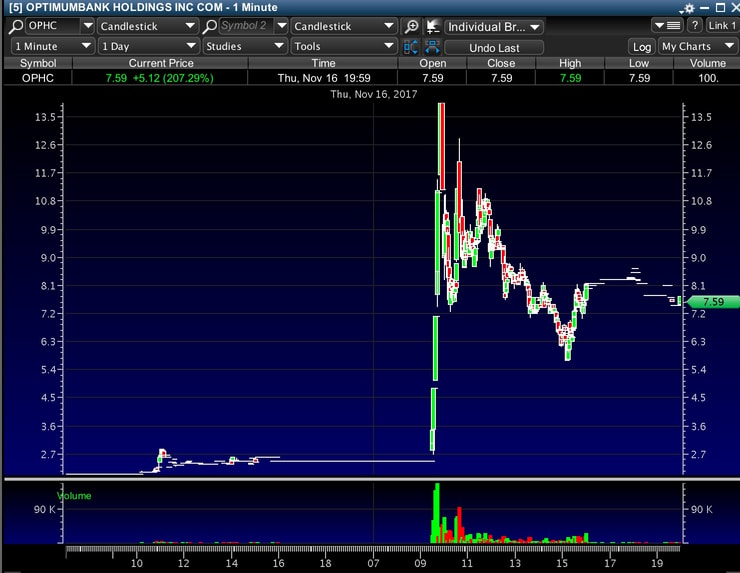
This is a huge one for me: Trade on patterns.
When the pattern is right, you can often predict it. When the naysayers email me and tell me to, “man up and stop only trading GIMMES — and start trading challenging strategies,” I laugh.
My first million** was made trading one basic pattern. My second million** came from another another basic pattern. Successful penny stock traders study, understand, learn to identify and then use patterns over and over again.
I teach my students common and reliable patterns. Like dip buying, shorting, buying low-priced stock breakouts on big trading volume, and earnings spikes. Learn these patterns.
Earnings breakouts happen over and over again. Sometimes an earnings breakout can go for three days or more. So keep an eye out for those big percent gainers.
Once you identify a big percent gainer, check to see if the catalyst was earnings. If it was, add this stock to your watchlist.
The dip buy is a another simple-yet-often-reliable penny stock pattern. What happens after a penny stock is pumped? The dump. It drops in price.
If you watch, a lot of times the stock will bottom out at a support level and then bounce back with a short squeeze. When all the short sellers try to get out of their position at the same time, it causes the stock price to bounce back up.
So watch stocks that rise and then come crashing down. If it’s a big enough crash, it could be a dip buy opportunity.
There’s also the classic “buy the rumor, sell the news” pattern. It happened earlier this year with marijuana stocks. There are more patterns you need to learn. I teach them in this must-read article.
Using Screens to Filter Important Data Points
Now that you’ve started a stock watchlist, what data points should you look for?
Perhaps just as important, how will you keep track of everything in real time?
I’m glad you asked …
One of the amazing things about the time in which we live is that you can trade from anywhere. All you need is a high-speed internet connection and an online trading account. With all the tools available, the barrier to entry is almost non-existent.
I recommend using a screening system. A stock screening system like StocksToTrade gives you real-time access to all the information you need to make trades based on your trading strategy.
StocksToTrade has built-in tools for creating custom stock watchlists. You can set up your StocksToTrade account to scan the markets for stocks meeting whatever strategy you want to use.
Whatever system you use, try to avoid a ‘cobbled-together’ screening system. That’s where you use so many different tools to get the information you need that you spend all of your time trying to make sense of it.
Tip: StocksToTrade has some of my favorite strategy identifiers built in. They’re called pre-programmed scans. StocksToTrade has dozens of them. There are other tools out there as well, but StocksToTrade is my hands-down favorite.
Bonus Tip: StocksToTrade incorporates a ‘paper trading’ module so you can practice before you put your hard-earned cash on the line. This is ESSENTIAL if you want to hit the ground running and grow your account from the beginning.
More Breaking News
- Top Oil and Gas Penny Stocks That Might Explode Under Trump
- Rezolve AI Unveils Bold Partnerships and Debt Conversion: Future Market Potential on the Rise?
- Why Is Rigetti Computing’s Stock Tumbling? Key Insights and What Lies Ahead
What to Avoid in Your Watchlist
By now, you know I favor trading stocks on the move. So if a stock stays flat for several days and there’s no catalyst for movement, you can take it off your watchlist.
Don’t Pick Too Many Stocks
Stock trading is more of an art. It’s definitely NOT an exact science. It’s like aiming at a moving target. If you have too many stocks — both on your list and in trades — you’re aiming at too many moving targets.
Limit the number of stocks on your watchlist and you’ll have a much better chance to understand how the game works. I usually have anywhere from five to 20 stocks on my watchlist. I recommend fewer to start.
Never Trade Too Big
One of the most important things to learn when you are a newbie trader is how to mitigate risk. This takes a clear strategy and self-discipline — too many traders lose their asses because they lack one or both.
Remember, no matter how much preparation, you will lose some of the time. Losses are part of the deal. Aim small, miss small. Then, when you do miss, cut your losses quickly.
The goal is to win more and achieve a better profit on your wins than the amount you lose. That’s it. Don’t overcomplicate things.
There are several different opinions about what percentage of your account to have in play on any given trade. A lot depends on the level of risk you’re willing to accept. At first, you should focus on small plays. Once you know what you’re doing you can go for bigger trades.
In my early days of trading, I often limited my position to 10% of my account. As the markets moved into the heady days of early 2000 and I started seeing consistent daily profits, I increased my stake. Some trades I even went as high as 75% of my total account.
The caveat? That was after learning enough about the patterns I was seeing to feel confident about what I was doing. I was also lucky.
Watchlist: Real-life Examples
Tip: If you want to speed up the process of learning everything I teach, then study the past.
It seems like everyone just wants hot stock tips. The problem is that most people aren’t prepared to capitalize on a perfect play.
You still need education and knowledge. If you want access to my daily stock watchlist, you can get it here. But I urge you to also watch the video lessons and learn this stuff. My team and I have cataloged tons of different stocks and examples. Studying the past can be the key to your future.
Penny Stocks Watch List

I’ve said it before: Penny stocks are very inefficiently priced. Far fewer traders follow penny stocks than large-cap stocks. This means when price fluctuations happen, you have time to get in on a big swing.
What does this mean for your watchlist?
For example:
If a penny stock spikes 20% in one day, you still have time to ride the wave created by the news. This is why, when it comes to penny stocks, you want to look at the day’s biggest percentage gainers.
If the gain is supported by the right news, the right catalyst, and the right chart breakout, it could keep going and give you the opportunity to trade — and potentially and make a profit. But if you see a big percent gain without news, be wary of trading the stock.
I don’t like to trade a stock based solely on the percent gain. I want to know the specific catalyst. Percent gain is a good indicator to go do some research. But then you’re looking for news.
One thing to clarify: You want to watch stocks that are ‘in play.’ Stocks that are sideways or just sitting there doing nothing don’t give you the potential to trade for a profit. So limit your penny stock watchlist to market movers.
Finding Hot Penny Stocks
It all starts with finding the biggest percent gainers from the previous day. Don’t start with the biggest losers, or a company that has a good product or service — focus on the biggest percentage gainers.
Remember, a lot of the news doesn’t have legs past the first day. In other words, you might see news on a stock and think you want to keep an eye on it. But then news about the stock goes silent. You can drop that stock from your list.
If news about a stock carries on to day three or day five, then keep watching this stock. It might be primed for the kind of setup you look for to make a play.
Volatile and Low-priced stocks
As I said above, volatility is a positive for trading penny stocks. The advantage to trading volatile and low-priced stocks is that small price movement equates to a high percentage price movement.
For example, if a stock is at $1 and it shifts 20 cents, that’s a 20% movement. If a stock is at $20 and moves 20 cents, that’s only a 1% shift.
So volatile and low-priced stocks can potentially have a huge upside for you as a day trader.
Watchlist Tips for Traders
If you’re already trading, then you likely keep a watchlist already. So here’s a couple of tips for you that can help make your process more efficient.
Create Watchlists Based on Current Factors
Historical plays are good to study if you want to recognize the patterns. But what about your watchlist, right now, today? You have to base your watchlist on what’s happening now.
How is the market trending? What kinds of plays are working today? If you’ve read my book, “An American Hedge Fund,” you know the market shifted the second half of 2000. I had to sit on the sidelines for a while to look for a new strategy.
It wasn’t just 2000 … it has happened again and again. The point is, you have to pay attention to what’s happening right now.
Use Your Previous Watchlists as a Reminder
At the beginning of this post, I mentioned habits. Part of being an efficient trader is developing good habits. One of the best habits you can create when it comes to watchlists is to review your previous day’s watchlist.
You might scrap the entire list and start over based on the day’s biggest percentage gainers or some catalyst. But it can often give you an idea which stock to watch the next day. Every single night, when I build a watchlist, I look at the previous day’s watchlist.
Master Your Trading Skills
I’ve said it over and over again … it’s become my life mission: Education and knowledge are key to getting ahead in this game
When I first started trading back in high school, I immersed myself in learning how the markets work. It was time well spent. And now I want to pay it forward.
My hope for you is that you educate yourself just as well. But the awesome thing is you don’t have to go searching for all this information the way I did. The world has moved forward, technology has advanced, and you can get what you need a lot faster.
You’ll still need to do the learning. But guidance is right in front of you. To start, you can take advantage of my excellent trading courses. It’s a great way to familiarize yourself to a potential career in trading penny stocks.
But if you’re really serious about making it happen much faster for yourself, then you’ll want to check out my Trading Challenge …
Trading Challenge
I have an amazing lifestyle. And all the ‘stuff’ is exciting. Want to know what’s even more exciting?
Helping students like you learn to become self-sufficient traders.
That’s why I’ve created the Trading Challenge. The best part about it is you don’t need to be some tech genius or math whiz and you don’t have to have a massive amount of money to get started.
What do you need? You only need three things …
- A desire to have more for yourself.
- The willingness to succeed.
- And a dedication to continuous learning.
If you’re up for it, apply to become my next student. Do it now here.
The Bottom Line
Are you ready to get serious about learning to trade? Then start your watchlist. Today. Don’t put it off.
Here, you learned some solid tips to help you start the smart habit of keeping a daily stock watchlist. You’ve learned what information to include, what to avoid, and how to use the watchlist to your advantage. What’s next?
Study, study, study. When you’re done studying, study some more. Watch my videos on YouTube. Get your hands on some of my DVDs.
And when you’re ready to get REALLY serious, apply for the Trading Challenge. It’s a great way to learn and trade alongside me and my top students.
Do you use a daily stock watchlist?
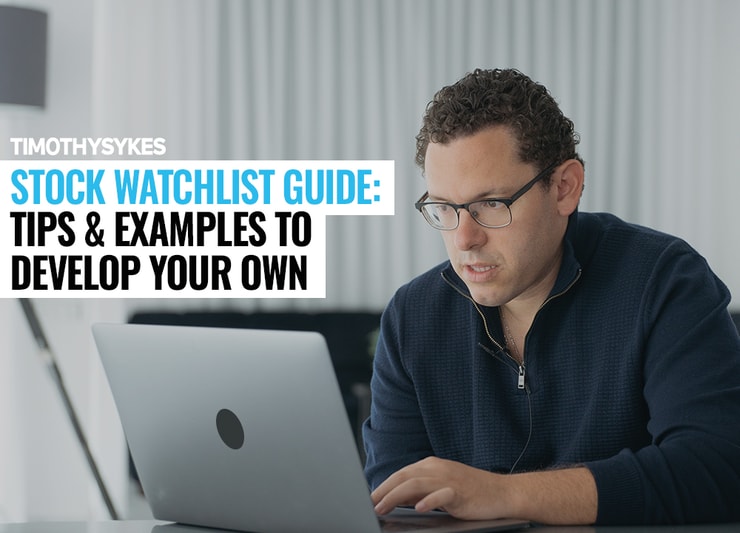

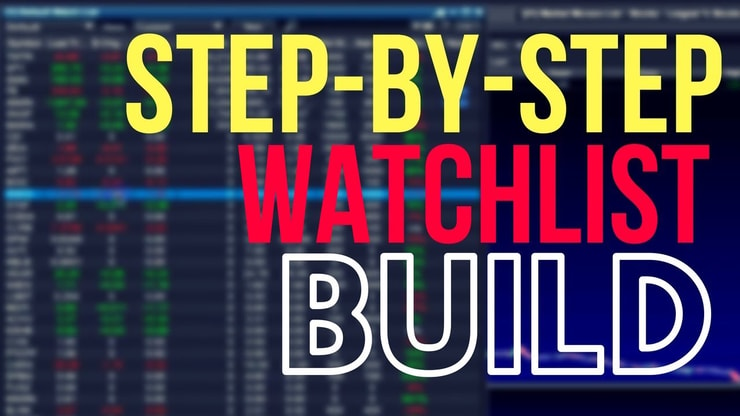

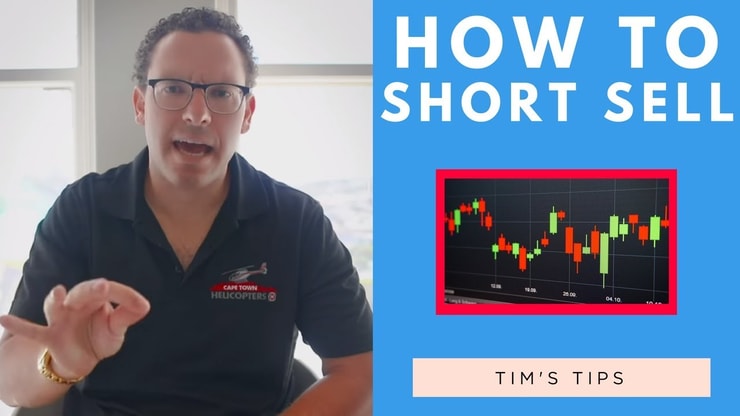
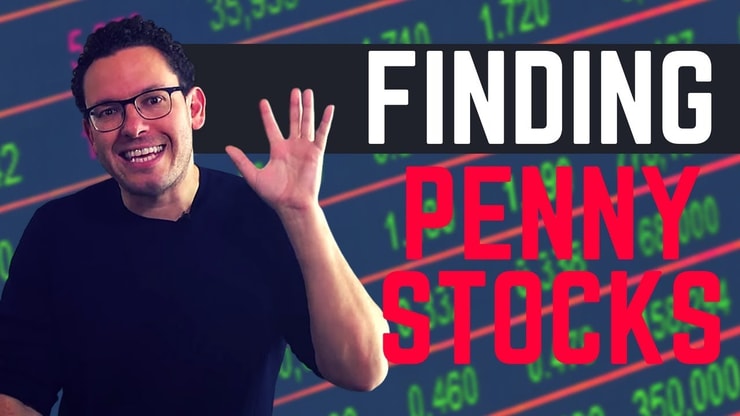

Leave a reply